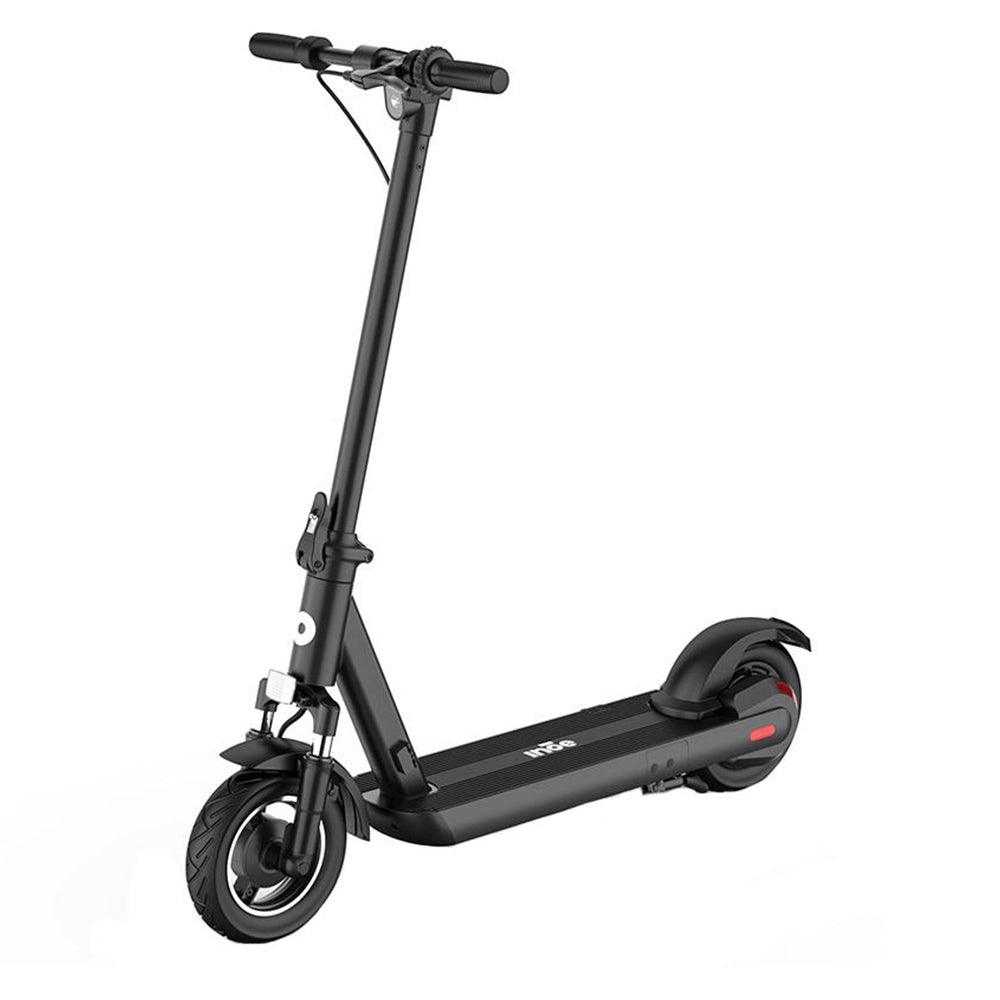The battery is the heart of the electric scooter. A battery in good condition allows you to fully enjoy every ride without interruption. But over time, it may show signs of weakness. How can you tell if it is still functional or if a replacement is necessary?
In this article, we will explore different methods to test an electric scooter battery. By adopting the right habits, you will extend the lifespan of your battery and optimize your riding experience.
Why test the battery of your electric scooter?
No matter what type of electric scooter you ride, whether it's a high autonomy electric scooter, lightweight, or entry-level, the battery is an essential component. Indeed, without it, your vehicle will not be able to move forward. However, over time, it can lose efficiency and autonomy, which then affects the performance of the machine. To ensure the "good health" of the battery, we advise you to conduct regular tests. This not only helps avoid unpleasant surprises but also allows you to intervene as soon as the first failures appear.

The importance of preventive diagnosis
Regular battery checks help anticipate failures and ensure the durability of the electric scooter. A battery in good condition is synonymous with good autonomy — essential for your daily commutes. Therefore, make it a habit to check the voltage and overall condition of the battery, as this could save you unnecessary expenses on repairs or premature replacement.
The signs of a defective battery
Several signs may indicate a problem with the battery. The gradual decrease in range is often the first warning signal. If you need to recharge your electric scooter more times than before, this may reveal a drop in range. Other symptoms may also raise your suspicion:
- An abnormally long or incomplete charge
- Sudden breakdowns on the road
- A charge indicator that no longer lights up properly
Possible causes of a failure
The battery of an electric scooter can lose efficiency for various reasons:
- Natural aging gradually reduces its capacity, leading to a loss of autonomy.
- Poor maintenance, such as overly long or frequent charges, accelerates its deterioration.
- Exposure to extreme temperatures, whether cold or heat, can affect the tension and performance of internal cells.
You will have understood, it is a relatively fragile component that needs to be properly maintained over time.
The impact of driving conditions on the battery

Know that the conditions in which you ride your scooter can really affect the battery. Here's how:
Difficult terrain
If you often drive on rough roads or uphill, your battery will be more stressed. As a result, it discharges faster and requires more recharges. The more demanding the driving, the more the battery's range may suffer.
Extreme temperatures
Whether in extreme cold or heat, extreme temperatures are not ideal for your battery. Cold can reduce its range, while heat can cause it to overheat and accelerate its wear. Ideally, avoid driving when temperatures are extreme to preserve its lifespan.
Constant high speed
Driving at high speeds over long distances can also put the battery to the test. This puts more strain on the cells and can shorten its lifespan in the long run.
In short, adapting your driving to the terrain conditions and avoiding extreme temperatures will help keep your battery in shape longer!
The methods for testing an electric scooter battery
There are several ways to test the battery of your electric scooter. Some methods involve a quick check of the battery, while others use specific tools for an in-depth diagnosis. This latter approach allows for better anticipation of potential repairs and replacements.

Visual inspection and quick tool-free battery test
"It is not always necessary to use specific tools to check the battery status of an electric scooter. A simple inspection can already provide valuable information."
1. One of the first elements to check is its external appearance. If you notice any abnormal swelling, burn marks, or damaged connectors, you can be sure that your battery has malfunctions. From there, you can then consider a more in-depth check to discover the causes or find quick solutions.
2. Another test involves inspecting the charger and the charging LEDs. When you plug in your electric scooter for charging, there is usually a light indicator that turns on to show the charging process. If no light appears or if it stays red for an extended period without turning green, then your battery may have an issue with the electrical system.
Test the battery with a multimeter
The multimeter is a reliable tool used to measure the battery voltage. Before any use, make sure that the electric scooter is powered off and that the battery is properly disconnected to avoid any risk of short circuit.
The multimeter must be set to the voltmeter function in direct current, with a value of 20V. Once this is done, place the probes on the battery terminals: the positive terminal with the red cable and the negative terminal with the black cable. After a few moments, the device displays a measurement that should be compared to the normal values indicated by the manufacturer.
If the measured voltage is in accordance with the manufacturer's specifications, the battery is functioning correctly. On the other hand, if it is significantly lower, it means that your battery is discharged, or even at the end of its life. It will then need to be replaced or, if possible, refurbished by a professional.
Test the battery with a voltmeter
If you do not have a multimeter, there is another solution. The voltmeter can be a simpler alternative to use, although less accurate.
To perform the test, start by turning off the electric scooter and disconnecting the battery. Then place the probes of the voltmeter on the battery terminals: the red on the positive terminal and the black on the negative terminal; then, note the value displayed on the screen.
The interpretation of the results is the same as for the multimeter. If the measured voltage is close to that indicated by the manufacturer, then there is no cause for concern. However, if the value is significantly lower, then you should consider a repair or replacement of the battery.
Be aware that an unstable measurement can also indicate a connection problem or aging of the battery cells.
Perform a load and endurance test in real conditions

Conducting a load and endurance test allows you to measure the battery's performance under real conditions.
1. The first method is to use the electric scooter on a usual route and observe the battery performance — whether its range meets expectations. If it drains faster than usual, it means that it is defective.
2. The second method is a stress test. In other words, it involves using the electric scooter on uphill roads or while maintaining a high speed. This will allow you to see if the battery holds the charge optimally. Otherwise, it could indicate an aging battery.
The frequency of battery tests for an electric scooter
Even if you don't necessarily have to "Testing your battery every day, a little check-up every 3 to 6 months, or after a certain number of kilometers driven is always necessary. This allows for quick detection of signs of weakness before they seriously impact your journeys. Additionally, after demanding driving conditions (such as extreme temperatures or difficult terrains), a quick test is a good idea to ensure that the battery has not suffered."
How to choose a replacement battery?

When it comes time to change the battery of your electric scooter, it is important to choose it carefully to avoid unpleasant surprises. Here’s what to pay attention to:
Compatibility
Check that the battery you wish to purchase is compatible with your model. This includes the dimensions and the connection system, as each scooter has its own specifications.
The capacity (Ah or Wh)
The capacity, expressed in Ah or Wh, determines how long you will be able to ride. If you need more range, choose a more powerful battery, but keep in mind that a larger capacity can also make the scooter a bit heavier.
The brand and the quality
"It is often preferable to stick with the same brand to avoid performance issues. A low-quality battery could reduce autonomy or even pose overheating risks."
Tension (V)
Make sure that the battery voltage matches that of your model to avoid any unpleasant surprises at the time of installation.
The type of battery (Li-ion, Li-Po, etc.)
Most electric scooters use lithium-ion (Li-ion) or lithium-polymer (Li-Po) batteries. Choose the one that matches your model.
By keeping all these criteria in mind, you will be sure to find the battery that perfectly suits your scooter and enjoy it to the fullest!
Differences in testing method according to technology: Li-ion Battery VS Li-Po
Li-ion batteries are primarily tested for their voltage, using a simple battery test with a multimeter. Li-Po batteries, which are more sensitive, require a physical inspection to detect swelling or damage and a more cautious charge test.

Autonomy and practical tests: The nuances between Li-ion and Li-Po
Li-ion batteries offer greater autonomy and a slower capacity loss. Li-Po batteries have an autonomy that is more likely to decrease quickly, especially under heavy loads or at full capacity.
Heat management: An important factor to check during testing
Li-ion batteries handle heat better than Li-Po batteries, which can overheat more easily. During testing, monitor the temperature to avoid damaging the battery and ensure it does not overheat excessively.
The importance of maintenance for each type of battery
Li-ion batteries must be regularly checked for their voltage and autonomy. Li-Po batteries, on the other hand, require more care to avoid complete discharges, extreme temperatures, and overcharging.
FAQ
How long does an electric scooter battery last?
The lifespan of a battery depends on several factors, such as the frequency of use, driving conditions, and maintenance. On average, a quality battery lasts between 2 and 5 years before showing significant signs of wear.
Can humidity damage the battery of my scooter?
Yes, humidity can be harmful to your scooter's battery. It is crucial not to ride in the rain or expose the battery to overly humid conditions. If your scooter is wet, make sure to dry it properly before charging.
Are scooter batteries recyclable?
Yes, the batteries of electric scooters are recyclable. It is important not to throw them in regular trash bins, but to return them to a collection point for electronic waste recycling. Many cities offer recycling solutions for this type of equipment.
Conclusion
Regularly testing the battery of your electric scooter is a necessity to avoid unpleasant surprises and ensure top performance. A simple visual inspection, the use of a multimeter, or a range test, these methods allow for quick identification of any issues and taking action before they have a major impact.
A well-maintained device also helps to extend the battery life.
By taking care to properly manage your recharges and avoid extreme conditions, you will optimize its performance and delay replacement. If despite everything your battery shows signs of weakness, it may be time to consider a diagnosis or even a change. And if you are looking to renew your scooter, at Weebot, you will find a wide selection of models with high-capacity batteries for worry-free riding!



